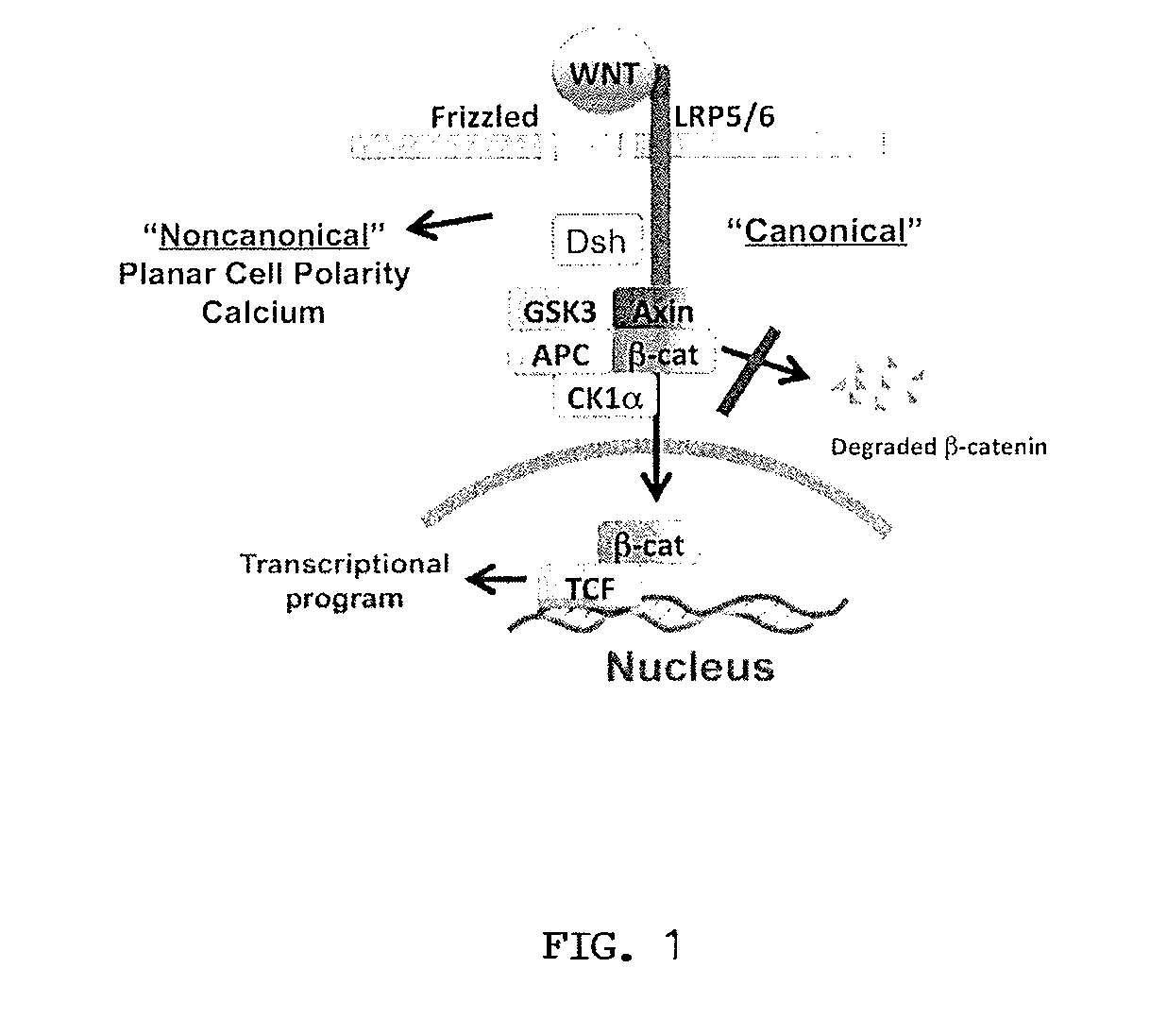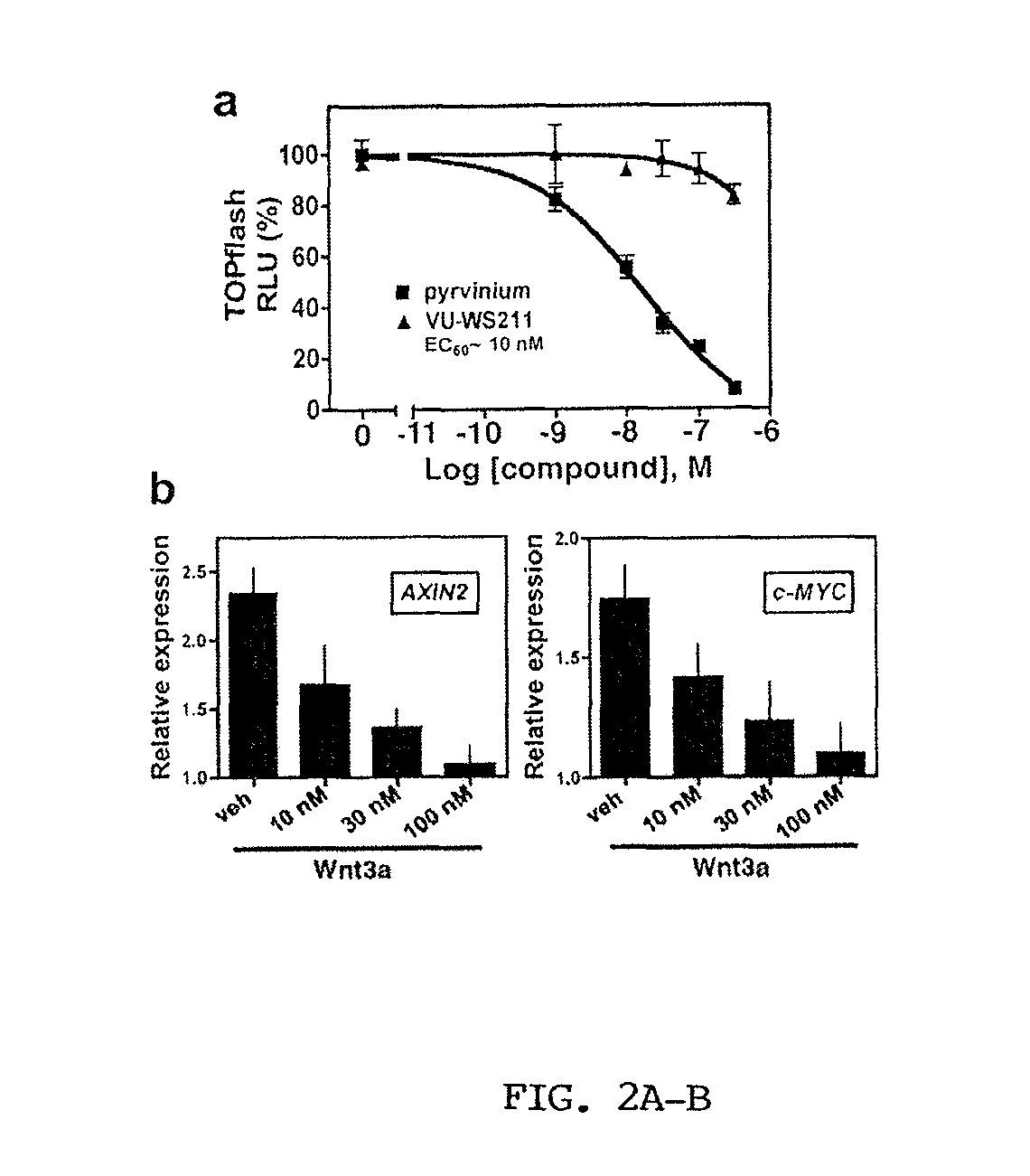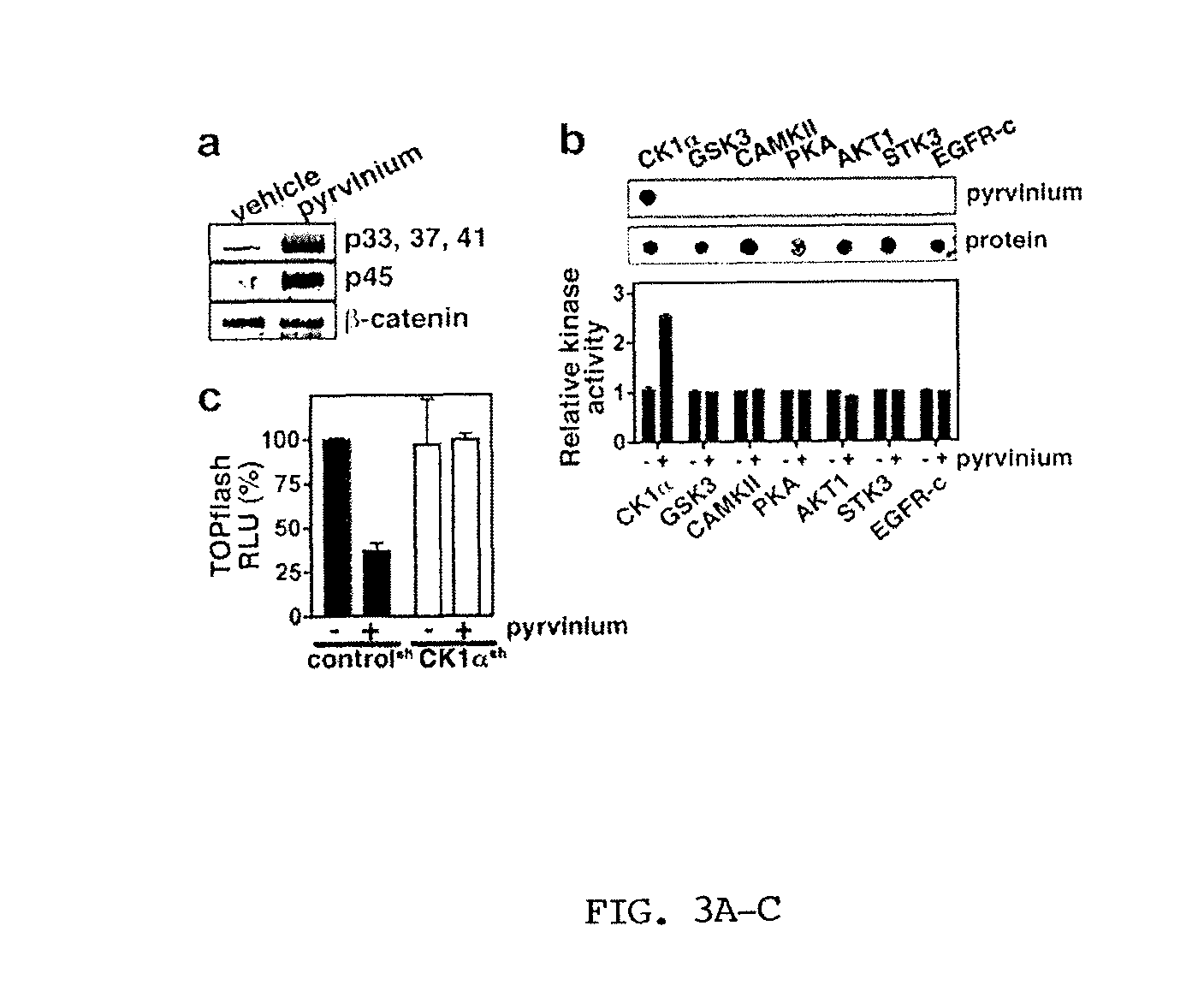Methods of using an antibody to inhibit WNT-mediated cardiac remodeling
a technology of wnt and antibody, applied in the field of molecular biology, oncology and cardiology, can solve the problems of unfavorable remodeling through poorly defined mechanisms, disability and death, myocardial infarction, etc., to inhibit wnt signaling, improve stamina, and increase life span
- Summary
- Abstract
- Description
- Claims
- Application Information
AI Technical Summary
Benefits of technology
Problems solved by technology
Method used
Image
Examples
example 1
[0287]Pyrvinium Inhibits Wnt Signaling.
[0288]The inventors developed a biochemical assay using Xenopus laevis egg extract that recapitulates Axin and β-catenin turnover in response to addition of recombinant Wnt co-receptor (LRP6) (Cselenyi et al., 2008). In Xenopus egg extract, β-catenin is robustly degraded and Axin is stable. In the presence of LRP6, however, β-catenin degradation is inhibited and Axin degradation is stimulated. Using this system (with β-catenin fused to firefly luciferase and Axin fused to Renilla luciferase as reporters for protein levels), they performed a high-throughput screen to identify small molecules that reverse the effects of recombinant LRP6. The inventors identified an FDA-approved antihelminthic compound (pyrvinium) that promotes β-catenin degradation and inhibits Axin degradation in Xenopus extract. Using a TOPflash reporter cell line (293HEK STF) in which luciferase is under the control of the TCF / Lef1 promoter, the inventors found that pyrvinium ...
example 2
[0300]Development of an Anti-LRP5 / 6 Antibody that Acts as a Potent Inhibitor of Canonical Wnt Signaling In Vitro.
[0301]Although the Wnt coreceptors, LRP5 / 6, are required for canonical Wnt signaling, they are not believed to be required for non-canonical signaling (Angers and Moon, 2009). In order to generate monoclonal antibodies against LRP5 / 6, three 15 kDa fragments encoding evolutionarily conserved domains of human LRP6 (also conserved in LRP5) were expressed and purified from bacteria. Recombinant proteins were used to inoculate BALB / c mice. Hybridoma lines were initially screened by ELISA for reactivity, and positive lines (1,500 clones) were tested for their ability to inhibit Wnt3a-mediated activation of the Wnt pathway using the TOPflash reporter cell line. Approximately 150 cell lines were identified that produced antibodies with anti-Wnt signaling activity. Nearly all of these lines were unstable, however, and failed to produce inhibitory antibodies over time. One line, ma...
PUM
| Property | Measurement | Unit |
|---|---|---|
| concentration | aaaaa | aaaaa |
| time | aaaaa | aaaaa |
| temperatures | aaaaa | aaaaa |
Abstract
Description
Claims
Application Information
 Login to View More
Login to View More - R&D
- Intellectual Property
- Life Sciences
- Materials
- Tech Scout
- Unparalleled Data Quality
- Higher Quality Content
- 60% Fewer Hallucinations
Browse by: Latest US Patents, China's latest patents, Technical Efficacy Thesaurus, Application Domain, Technology Topic, Popular Technical Reports.
© 2025 PatSnap. All rights reserved.Legal|Privacy policy|Modern Slavery Act Transparency Statement|Sitemap|About US| Contact US: help@patsnap.com



